Apart from the round-shaped corners and the multitasking functionality, what other major changes did you notice after upgrading to Windows 11? Yes, the new start menu.
To some users, the start menu should be covering the entire screen like we used to notice on previous Windows versions. And many users prefer alternatively — the present form of the start menu.
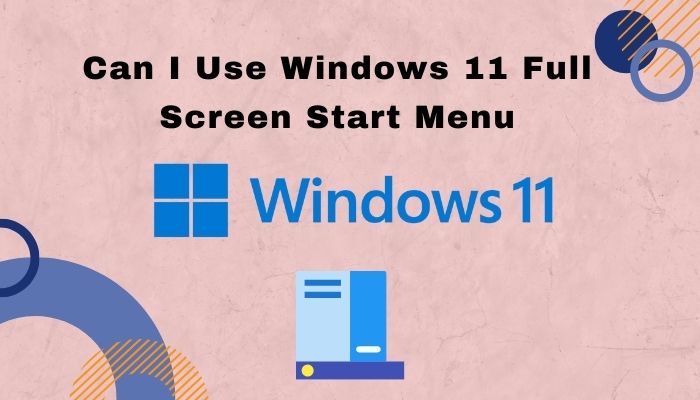
I’ll assume you belong in the earlier community that favors using a full-screen start menu on Windows 11. And trying to tweak every option in Windows settings to make that happen.
As you landed on this article, my responsibility is to supply adequate knowledge regarding Windows 11’s full-screen menu. Starting with answering your foremost query―
Check our latest post on how to Get Back Start Menu Tiles on Windows 11
Microsoft doesn’t allow you to resize Windows 11’s start menu as in previous versions. That means no longer dragging the menu screen to reshape to your desire. But, there are third-party applications that will help you to utilize the full-screen start menu.
However, I wouldn’t recommend you use any third-party applications. There was one particular method to set the Windows 11 start menu to full mask view. All you needed was to tweak some options in the registry editor. But that was for the earlier version.
With the updated version, there’s no method remaining to use the full-screen start menu in Windows 11.
Before you change anything on the Windows 11 start menu, let’s take a look at what the default version contains.
When you click on the start menu icon, the first thing you’ll notice is a search box at the very top. Followed by the pinned applications — you can access them within a second’s response. After that, you’ll notice the recommended section where recently installed applications/ most used applications will appear.
Furthermore, you’ll spot the account settings and shut down menu.
That’s pretty much it. No resizing of the app tiles, no group tiles in a folder; moreover, no reframing option to conclude.
But don’t be annoyed. I have managed some methods that may help you personalize your Windows 11 start menu by just a little bit. That’s even better than no customization option, right?
Check out our expert-recommended guide on How To Enable Telnet On Windows 11
Here’s the process of customizing the Windows 11 start menu:
The most noticeable change in the Windows 11 start menu is the location. In earlier Windows versions, it was in the left corner of the display. But now, it’s in the center.
You can change it to the conventional position with a simple alteration in the settings menu.
Here are the steps to change the start menu location in Windows 11:
- Press Windows + I to launch Windows settings.
- Click on the Personalization tab from the left pane.
- Select the Taskbar from the list.
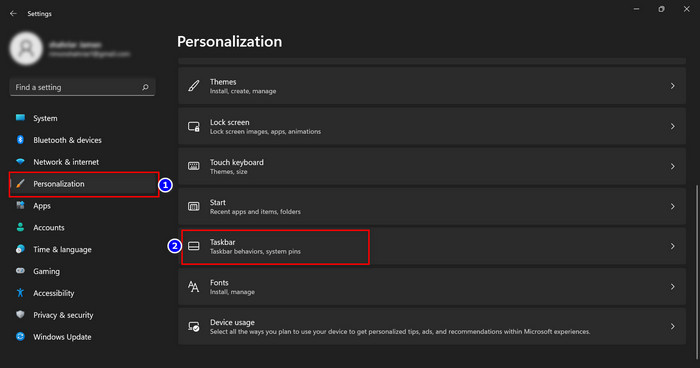
- Scroll down and click on Taskbar behaviors.
- Set the taskbar alignment from the center to the left.
![align-center-to-left]](https://10scopes.com/wp-content/uploads/2022/05/align-center-to-left.jpg)
Your start menu icon will appear on the left side of the display, like Windows 10. Need another change on the start menu? Check out the following sections.
Check out our latest fix for Bluetooth Toggle Missing On Windows 11
If you want to be more selective about the applications in the start menu, Windows 11 has the exact feature.
Here’s the procedure to change application order in Windows 11:
- Open the start menu and right-click on the application you want to move.
- Select the option that you want to change with the application. E.g., select unpin to remove the application from the start menu.
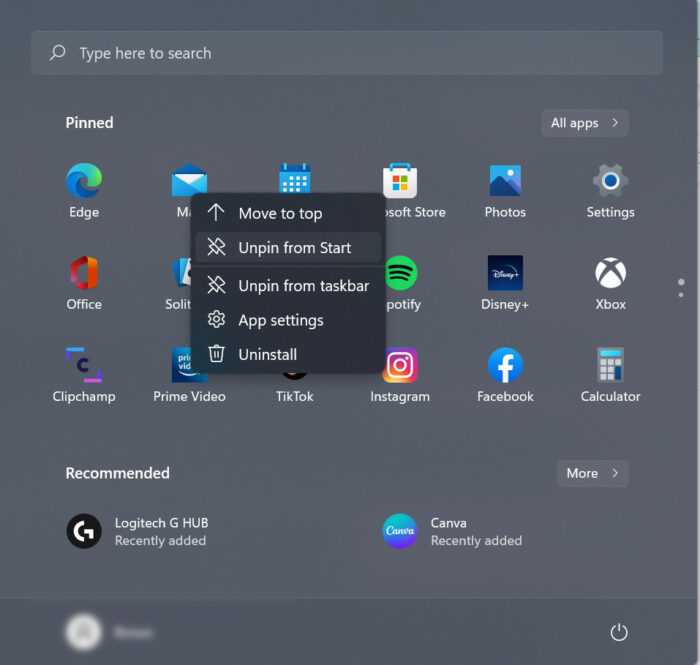
- Drag around the application icon to move in between.
After right-clicking on the app icon, you’ll understand what’s there to change and how you can change them. So, don’t worry if you are not familiar with the Windows 11 interface.
You may like to check out our latest post on the Show Folder Size in Windows 11.
How to Resize Windows 11 Taskbar
Unlike Windows 10, you can’t just reshape the taskbar icons with a simple drag-drop strategy. You need to make certain changes if you prefer to modify the taskbar.
Here’s the procedure to resize Windows 11 taskbar:
- Press Windows + R to launch the run prompt.
- Type regedit in the box and hit Enter.
- Navigate to HKEY_CURRENT_USER > Software > Microsoft > Windows > CurrentVersion > Explorer > Advanced.
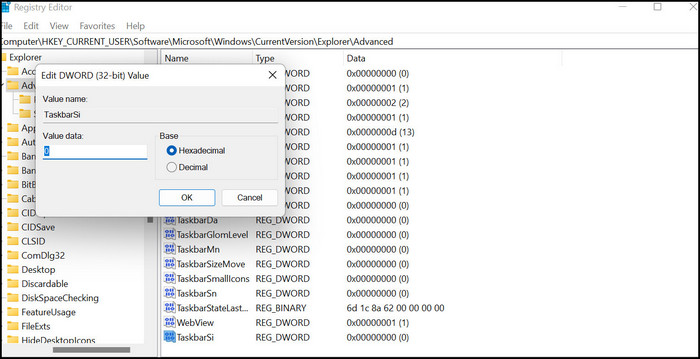 Right-click on advanced and select new > DWORD (32-bit) value.
Right-click on advanced and select new > DWORD (32-bit) value. 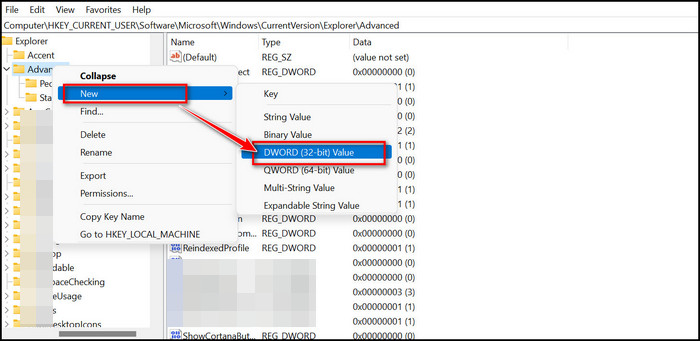
- Name the DOWRD to TaskbarSi.
- Double click on the TaskbarSi and change the Value data field to 0,1,2,3.

Note: Here value for 0= small icons, 1=Medium icons, 2= Large icons. Click ok once you set the value.
Restart the computer after a successful registry edit. You’ll notice different taskbar icon sizes after a proper reboot.
Check our exclusive tutorial on How to Fix Blue Screen on Windows 11
Frequently Asked Questions
How do I enlarge the Start menu in Windows 11?
You can’t enlarge the start menu in Windows 11 unless you use any third-party applications.
Can I enable Windows 11 Full-screen with the F11 button?
Unfortunately, the F11 button doesn’t work in Windows 11 like it used to. So, you can’t enable full-screen view by just simply pressing the F11 key.
How do I change Windows 11 start menu appearance?
Go to settings > Personalization > Colors > Select your color > toggle on show accent color on start and taskbar.
Does Windows 11 have Start menu tiles?
No, Windows 11 start menu doesn’t have tiles like the previous versions.
Final Remarks
Regardless of the customization options in the start menu, Windows 11 is not as boring as you’re thinking right now. A few customizable options in the start menu, such as changing the start menu alignment, and reshaping the taskbar to your preferred size, are pretty handy in my opinion.
After all, you did not install the Windows just to look at the start menu all day long!
So, get that detail out of your head and enjoy the clutter-free features. Contact us if you have any other queries.




